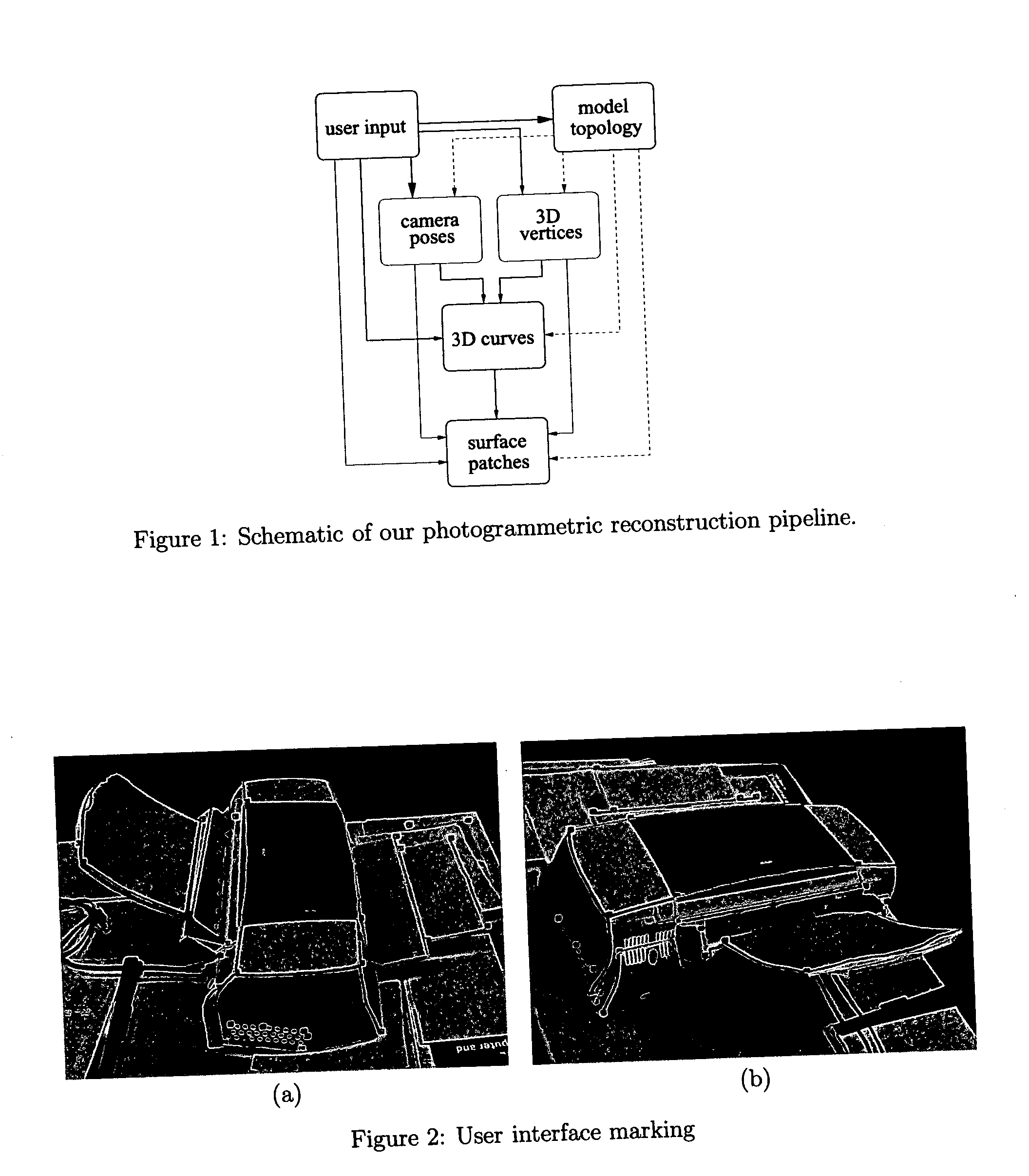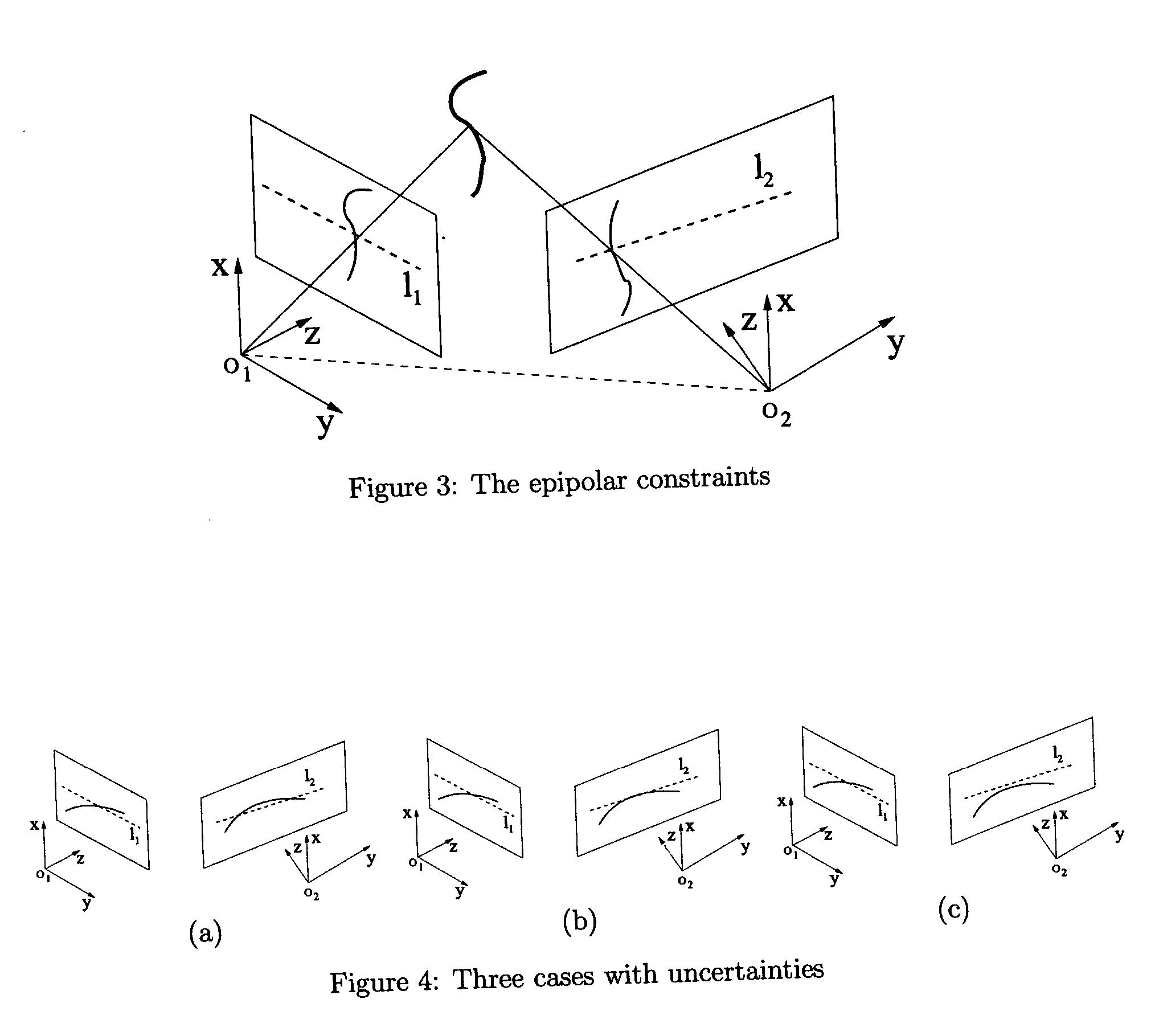Photogrammetric reconstruction of free-form objects with curvilinear structures
a free-form object and curvilinear structure technology, applied in the field of computer graphics and vision, can solve the problems of preventing us from applying automatic algorithms, requiring a significant amount of effort to reach reasonable accuracy of photogrammetric methods, and reconstructed free-form natural or man-made objects still pose a significant challenge, so as to achieve the effect of reducing the amount of bending energy, reducing the difficulty of reconstructed free-form objects, and improving the accuracy of free-form objects
- Summary
- Abstract
- Description
- Claims
- Application Information
AI Technical Summary
Benefits of technology
Problems solved by technology
Method used
Image
Examples
Embodiment Construction
1. OVERVIEW
1.1. The User's View
[0068] Constructing a geometric model of an object using our system is an incremental and straightforward process. Typically, the user selects a small number of photographs to begin with, and recovers the 3D geometry of the visible feature points and curves as well as the locations and orientations from which the photographs were taken. Eventually, 3D surface patches bounded by the recovered curves are estimated. These surface patches partially or completely cover the object surface. The user may refine the model and include more images in the project until the model meets the desired level of detail.
[0069] There are two types of windows used in the reconstruction system: image viewers and model viewers. By default, there are two image viewers and one model viewer. The image viewers display two images of the same object at a time and can switch the displayed images when instructed. The user marks surface features, such as corners and curves, as we...
PUM
 Login to View More
Login to View More Abstract
Description
Claims
Application Information
 Login to View More
Login to View More - R&D
- Intellectual Property
- Life Sciences
- Materials
- Tech Scout
- Unparalleled Data Quality
- Higher Quality Content
- 60% Fewer Hallucinations
Browse by: Latest US Patents, China's latest patents, Technical Efficacy Thesaurus, Application Domain, Technology Topic, Popular Technical Reports.
© 2025 PatSnap. All rights reserved.Legal|Privacy policy|Modern Slavery Act Transparency Statement|Sitemap|About US| Contact US: help@patsnap.com



